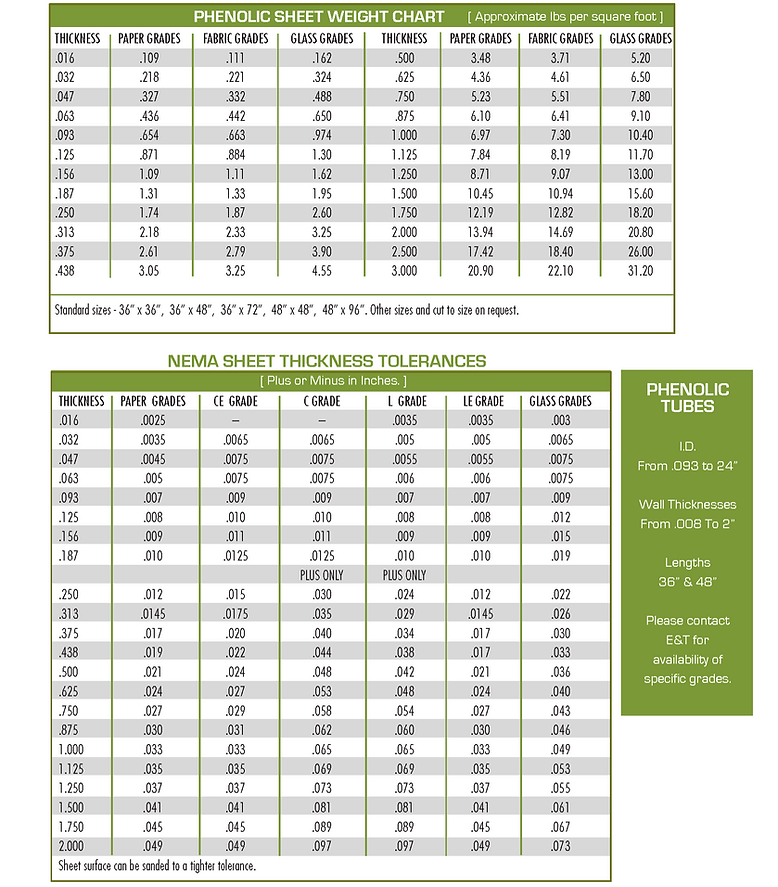High Performance Plastics | Phenolic
Thermosets
Phenolics are one of the oldest plastics. They encompass a wide variety of grades, each with a specific set of properties. Phenolics are manufactured by impregnating layers of material with a phenolic resin, and then applying heat and pressure which transforms these layers into a solid mass. The result is a thermoset which is dense, dimensionally stable, structurally strong, has low creep, and is an excellent electrical insulator. This general group of industrial laminates also includes glass fabrics which are laminated with melamine, epoxy, or silicone
resins.
PAPER GRADES
NEMA grades X, XX, X00 XP, X00P, XPC
Lowest cost of the phenolic family. Used as electrical insulators, switchboards, panel boards. The punching grades can be die cut to intricate shapes.
FABRIC GRADES
NEMA C, CE – Canvas grade is used for high mechanical and impact strength. This is the most common and widely used phenolic. Applications include gears, rollers. pulleys, and many other structural applications. The CE grade improves electrical insulation and better moisture resistance.
NEMA L, LE – Linen grade uses a finer weave than the canvas. This allows for better machining of intricate shapes. Linen is used for finer gears, bushings and pinions. The LE grade offers the best insulation of all the fabric grades, and is resistant to moisture
and mild acids and alkalies.
GLASS GRADES
NEMA G3 – Glass fabric with phenolic offers more mechanical strength and moisture resistance. This is often used for seals and gaskets.
NEMA G-5, G-9 – Glass fabric with melamine offers superior arc resistance, outstanding overall electrical properties even under wet conditions, and flame resistance. The G9 meets a more stringent. military specification. These grades are used for arc
barriers, circuit breaker parts, terminal blocks, and switchboard panels.
NEMA G-7 – Glass fabric with silicone is for high temperature applications. It can operate continuously at 485 F.Like the other glass grades, it has excellent electrical properties. Ibis classified as class H insulation and is used in any high temperature electrical applications.
NEMA G10, 6-11, FR4 – Glass fabric with epoxy offers very good mechanical strength, excellent moisture resistance, and excellent electrical properties. It maintains. these properties at elevated temperatures, This is used in structural applications, st insulations, and washers. The FR-4 offers superior flame resistance and is used for circuit boards.
NEMA GPO-1, GPO-2, GPO-3 – Glass mat reinforced with thermoset polyester offer electrical insulation, moisture resistance and economy. GPO-1 is a good punching material used for transformer spacers and supports. GPO-2 is UL 94V.0 where flame retardancy is needed. GPO3 offers this also with greater arc and track protection and low smoke generation.
